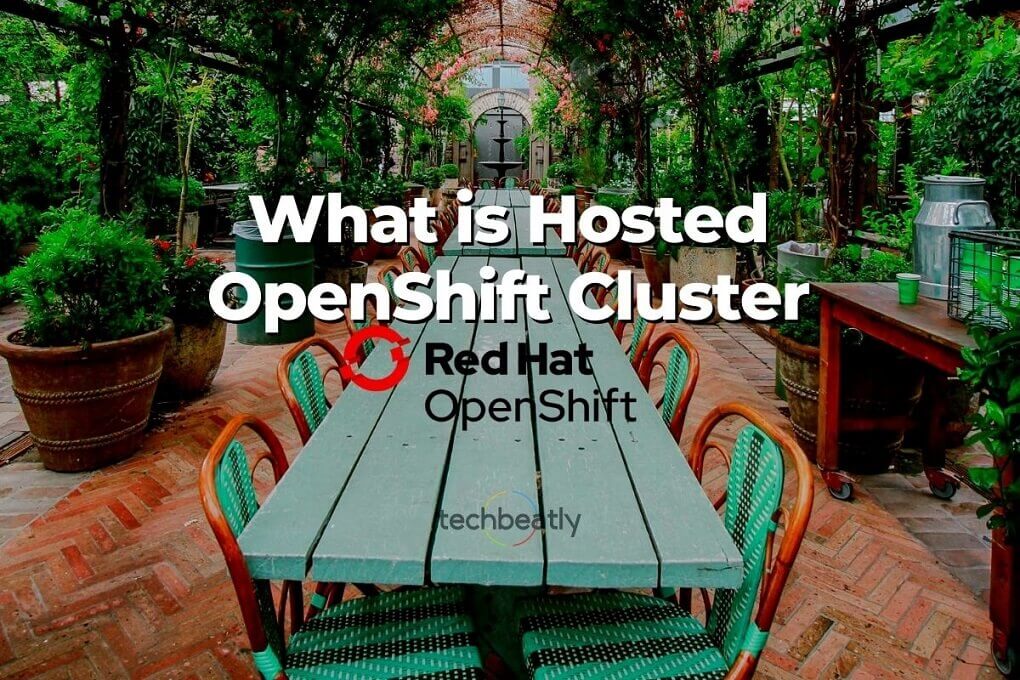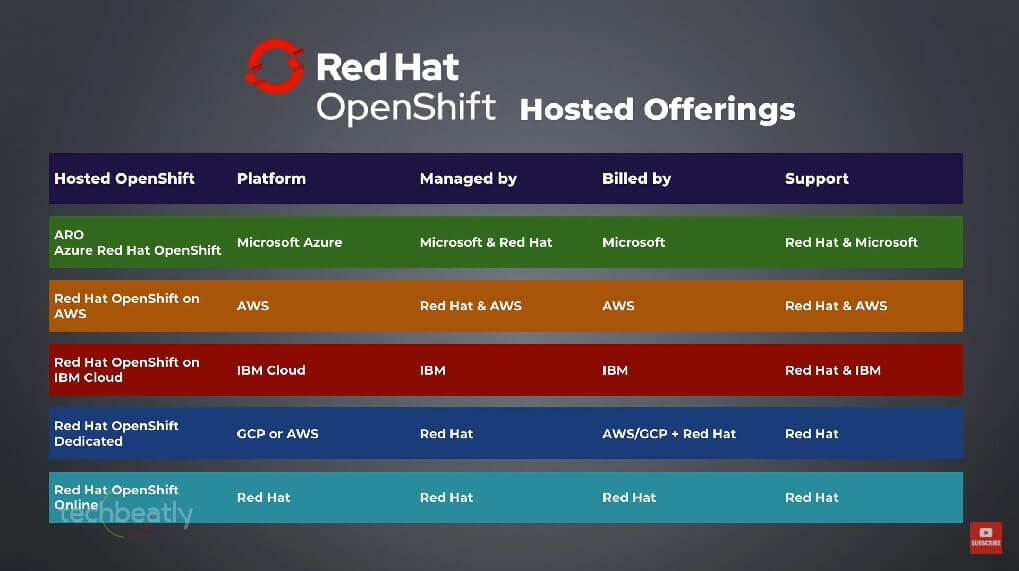What is Hosted OpenShift Cluster
-
 Gineesh Madapparambath
Gineesh Madapparambath
- Cloud, Infrastructre & hardware, Kubernetes
- March 16, 2021

Watch the video for more details about Hosted OpenShift Clusters.
So what is this Hosted or Managed OpenShift Platforms
We have mainly 2 options, Self-Hosted OpenShift clusters and Hosted or Managed OpenShift clusters .
For Self-hosted OpenShift clusters, we have to design and deploy the OpenShift clusters from scratch. That means, we have to configure the network, Configure DNS and Load balancers, Provision the virtual machines and install OS inside VMs, then initialize the cluster configurations, and deploy the cluster ! and also other tasks like configuring the persistent storage for internal registry, dynamic storage provisioning and more. On the other hand Hosted OpenShift Clusters is simple and easy to deploy and access. Most of the previously listed tasks will be outsourced like provisioning infrastructure including VMs, Network, Load balancers, then Configuring the nodes, deploying clusters etc. And you will not need to worry about the maintenance of the cluster or node like patching, upgrading etc as everything will be managed by the hosting provider or vendor. So, if the organization does not want such headaches, they can simply opt for Hosted OpenShift Clusters.
Please remember, when you are using managed or Hosted OpenShift Clusters, there are some limitations like,
- You will not be able to manage the underlying infrastructure like cluster nodes or other components, everything will be managed by the provider with Red Hat
- The customization Options will be limited compared to self-hosted clusters.
- You will be restricted to install Operators to specific namespaces.
Red Hat has partnership with most of the cloud providers and right now offers Hosted OpenShift cluster solutions on Microsoft Azure, IBM Cloud, AWS and also OpenShift Dedicated.
Azure Red Hat OpenShift
Azure Red Hat OpenShift or ARO, is a fully managed OpenShift service in collaboration with Microsoft and Red Hat. The cluster or the solution will be hosted in Azure Cloud and billed by Microsoft. But the cluster will be managed and supported by Red Hat.
Red Hat OpenShift on AWS
For Red Hat OpenShift on AWS, the service will be hosted and billed by AWS but the management and support will be done by Red Hat and AWS.
Red Hat OpenShift on IBM Cloud
IBM also offers a similar solution called Red Hat OpenShift on IBM Cloud but the solution will be hosted, billed and managed by IBM. You will get support from Red Hat though.
Red Hat OpenShift Dedicated
Unlike previous solutions, Red Hat OpenShift Dedicated is something different where the cluster will be hosted in AWS or Google Cloud Platform but billing, support and management will be done by Red Hat.
Red Hat OpenShift Online
Okay, whatever options I have mentioned earlier are fully managed clusters and the full cluster is for your own purpose. What if you need only the platform but not the entire OpenShift cluster ? Then you can think about Red Hat OpenShift Online, which is a fully managed service from Red Hat where you can simply sign-up and start using the OpenShift Platform for testing, deploying and scaling your application. You don’t need to worry about the cluster capacity or nodes as you can simply use the solution as PaaS or real Platform as a Service.
Hosted OpenShift – Comparison Table

As you can see in the table, the roles and responsibilities are shared between Red Hat and Cloud providers. Most of the cases, the Cluster will be managed by Red Hat and the infrastructure will be under Cloud Provider’s responsibility.
Hosted OpenShift References

Gineesh Madapparambath
Gineesh Madapparambath is the founder of techbeatly. He is the co-author of The Kubernetes Bible, Second Edition and the author of Ansible for Real Life Automation. He has worked as a Systems Engineer, Automation Specialist, and content author. His primary focus is on Ansible Automation, Containerisation (OpenShift & Kubernetes), and Infrastructure as Code (Terraform). (Read more: iamgini.com)
Note
Disclaimer: The views expressed and the content shared in all published articles on this website are solely those of the respective authors, and they do not necessarily reflect the views of the author’s employer or the techbeatly platform. We strive to ensure the accuracy and validity of the content published on our website. However, we cannot guarantee the absolute correctness or completeness of the information provided. It is the responsibility of the readers and users of this website to verify the accuracy and appropriateness of any information or opinions expressed within the articles. If you come across any content that you believe to be incorrect or invalid, please contact us immediately so that we can address the issue promptly.
Tags :
- Cloud
- Infrastructre & hardware
- Kubernetes
- Open shift
- Getting started with managed openshift
- Introduction to hosted openshift clusters
- Learn openshift
- Managed kubernetes clusters
- Managed openshift clusters
- Openshift hosted services
- Openshift managed clusters
- Redhat open shift
- What is hosted openshift
- What is openshift
- What is red hat hosted openshift
- Why hosted openshift


